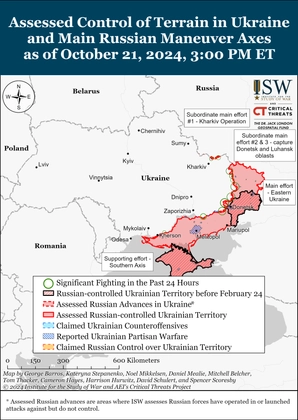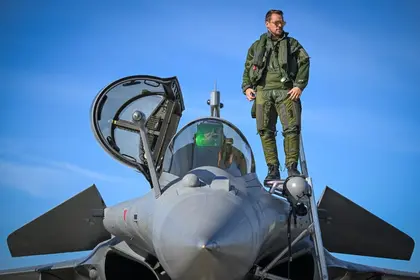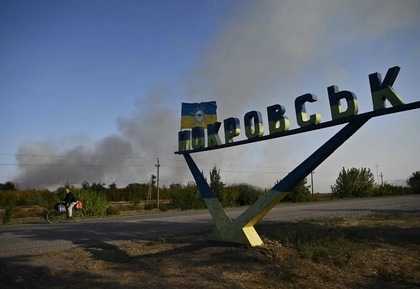From the Editors: This is the fourth of a five-part analysis. See Part 1, Part 2, and Part 3, here.
NATO
JOIN US ON TELEGRAM
Follow our coverage of the war on the @Kyivpost_official.
NATO has acted in conflict with its previous strategic concept, failing to use a mix of political and military tools to stop a conflict that affects Alliance security. It has demonstrated not only a lack of resolve and commitment to own values and principles, but also several military shortcomings. Its lack of sustainability and Air Defense are but two of them.
The US and NATO’s ability to manage crises has, however, been challenged beyond Ukraine. Syria is one example of Russia injecting itself into a conflict and, consequently, becoming a part of the solution. Israel’s war against Hamas is another example, though with Russia’s partner Iran as one of the actors. Russia has also long cultivated close ties with Serbia and other Slavic allies in the Balkans. “With the specter of unresolved conflict looming in Bosnia and Herzegovina and between Serbia and Kosovo, Western analysts say Moscow is seeking to leverage ongoing instability to maintain its influence and weaken the EU and NATO.”
Russia is using chaos and fear to undermine the Alliance
Every new crisis, conflict or war along NATO’s external borders or US area of interest, is bound to stretch a downsized and already overstretched military force structure. It will help shift Western focus and attention between Ukraine and all the other conflicts requiring its attention. The question is, therefore, when, and where will the next crisis happen? The Balkans? The Red Sea? Korea? North Africa? Svalbard? Maybe.

ISW Russian Offensive Campaign Assessment, October, 22, 2024
NATO’s involvement
NATO’s strategy has been consistent since 2014. It seeks a political solution to a war Russia is determined to resolve through brute force. It remains committed to providing non-military support only, leaving it up to the member states to provide the military aid they deem acceptable. The Alliance stays committed to the policy of “no boots on the ground,” despite Ukraine’s critical vulnerabilities and shortcomings; despite the ongoing Russian Hybrid War against NATO and the EU; despite the long-term effects of the “tsunami of ripple effects” of the war will have on the political landscape in Europe; and despite the devastating consequences a Russian victory will have for European security.
The Alliance is insisting on continuing a strategy that has allowed Russia to turn peace into crisis, conflict, and war. The present strategy is for that very reason, not sustainable.
There are only two options: Either NATO military intervention, or a political solution where Ukraine becomes a NATO member in one month.
NATO needs to start putting out fires
In August 2022, I argued that Western “intervention in Ukraine is inevitable. Despite the US and NATO’s continued declarations that they will not deploy military forces to help defend Ukraine, it is bound to happen… The reality is that the West is fast reaching a long-predicted milestone. In the same manner, as logistics forced Russia to adjust its initial operational objectives for the invasion, logistics are about to force the Alliance to change its strategy. NATO will need to start acting according to NATO’s strategic concept 1999-2022: Stop ongoing conflicts threatening the security of its member states.”
If my postulate that “Russia will never accept being defeated by Ukraine” is correct, Europe and the US might finally conclude that they have to get directly involved to re-establish European security. They have two options – and two options only: Either military intervention according to the UN Doctrine Responsible to Protect and its late strategic concept, or a political solution where Ukraine becomes a NATO member in one month (giving Putin an off-ramp and an opportunity to withdraw its forces from Ukrainian territory to avoid triggering article 5).
Both options would secure Ukrainian independence and sovereignty, stop the biggest humanitarian catastrophe in Europe since World War II, and stop the ongoing destruction of Ukraine. It would also allow the West to refocus its efforts from defense, humanitarian, and financial support to reconstruction and repatriation. It will re-establish NATO deterrence and status as a military Alliance. This could – and should – happen in 2024. Maybe.
Reassuring factors
The US and Europe’s failure to ramp up production when the war started has already been described. While the process started late, the output is expected to increase substantially in 2024.
Before the full-scale invasion, the US produced about 14,400 of the artillery shells per month. The production of 155mm shells has already been doubled by December 2023. The increase will continue through 2024. The US Army aims to boost its monthly production to 36,000 by March, 60,000 by September, and 70,000 to 80,000 in early 2025. The production will reach 100,000 shells a month by the end of 2025, depending on when Congress agree on the supplemental funding bill.
The EU members were producing about 230,000 155mm shells a year – about one-third more than the US – when the full-scale war started. Europe has, however, since moved slower than intended, hampered by the consensus-focused nature of the EU. Parts of the European DIB are still awaiting defense procurement orders. Others like Finland are in the process of ramping up their production. By February 2023, Europe produced about 300,000 rounds annually. By November, Thierry Breton, European Commissioner for the Internal Market suggested that Europe could now deliver about 400,000 rounds annually. Estonian Defence Minister, Hanno Pevkur, put the figure between 600,000 and 700,000, believing it would reach one million rounds in 2024.
Similar trends are found throughout the Western DIB. The production of AD systems, missiles, and more, are increasing. The bottom line is that the “trickle” of ammunition Ukraine might be experiencing today will turn into a “small river” by the end of 2024. It will no longer be using old, out-of-date ammunition, but modern, smart and highly effective ammunition.
To offset the temporary gap, Ukraine is increasing its domestic production of drones to offset artillery shortages and is planning to produce 155mm ammunition in Ukraine with Western companies from 2024.
The introduction of F-16s over the battlefield
Ukrainian pilots and technicians are presently undergoing training on the combat aircraft and its sensors and weapon systems. That means that personnel urgently needed to secure the sky over Ukraine are presently unavailable. This is reflected in the combat mission ratio between Ukraine and Russia. This summer, Russia was fielding five combat missions for each Ukrainian. This month, the ratio is nearly seven to one. This will all change in 2024.
At the start of the full-scale war Ukraine had 120 warplanes. Of these, only one-third were usable.
Belgium, Denmark, Netherlands, and Norway will start delivering F-16s in the spring of 2024. The total numbers have not yet been revealed. Denmark will provide 19. The Netherlands and Belgium have 42 and 53 F-16s in their inventory respectively. Norway had 57 F-16s, but is in the process of handing over 32 fighter jets to Romania. That means that the maximum number of fighter jets available to Ukraine – unless the US decides to contribute – is 139. The final numbers will probably be somewhat lower.
The F-16 is no silver bullet. That said, it is by far better than Ukraine’s existing fighter jets. They will replace Ukraine’s fleet of Soviet legacy MiG-29s, Su-24s and Su-25s which have long passed their life expectancy. While they will remain inferior in numbers to the Russian Air Force, their ability to conduct Air Interdiction, Close Air Support and Suppression of Enemy Air Defenses will increase dramatically. Equally important, Ukraine will be able to recruit pilots from both the US and Europe.
The F-16s will enter the battle next summer in time for Gen. Valery Zaluzhny to fight the counteroffensive he originally planned with all necessary means available.
War at sea
As previously described, Ukraine has used cruise missiles, UAVs, and maritime drones (“Sea Baby”) to sink or destroy 23 Russian warships, submarines and vessels. It has denied the BSF the opportunity to use the Black Sea to its advantage. Consequently, Russia’s ability to conduct amphibious operations is close to non-existent. Its ability to conduct maritime interdiction operations and uphold the blockade of Ukrainian ports is reduced. Parts of the BSF have been relocated from Crimea to Novorossiya.
The war at sea will continue to develop in 2024. Ukraine is developing new and more capable maritime drones. A new maritime coalition has recently been established by the United Kingdom, Norway, and several other nations. They will assist in the strengthening of Ukraine’s maritime security. Ukraine will finally receive the support it needs to build its maritime capabilities.
Additionally, a mine-sweeping group of the Bulgarian and Romanian navies began clearing the Black Sea off the Bulgarian coast along the route of Ukraine’s new sea corridor in October. Turkey, Romania and Bulgaria plan to sign a joint plan to clear mines floating in the Black Sea in January.
The moment NATO decides to conduct Freedom of Navigation in the Black Sea – an operation equally crucial as in the Arctic and the South China Sea – the threat from the BSF will be gone. While this option is as likely (or unlikely) as a NATO military intervention in Ukraine, the failure to uphold the universal freedom of navigation will have global repercussions.
The views expressed in this opinion article are the author’s and not necessarily those of Kyiv Post.
You can also highlight the text and press Ctrl + Enter






